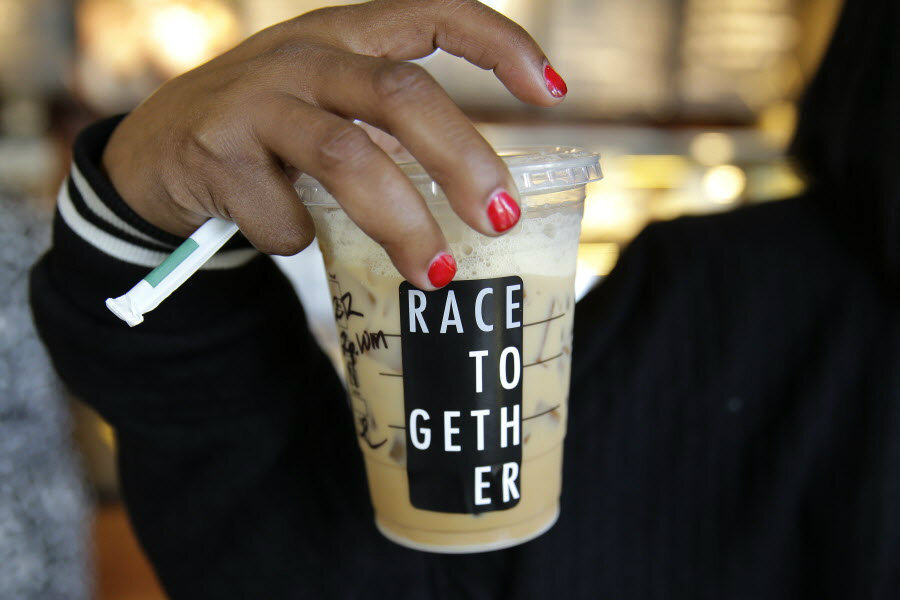Why Starbucks is pulling back from 'Race Together' campaign
Loading...
Starbucks’ “Race Together” campaign continues – just not on your coffee cups.
Less than a week after the coffee giant kicked off the social awareness program aimed at encouraging dialogue on race relations, CEO Howard Schultz announced Sunday that baristas will no longer be writing “Race Together” on coffee cups, ending a key but widely criticized component of the campaign.
“While there has been criticism of the initiative – and I know this hasn't been easy for any of you – let me assure you that we didn’t expect universal praise,” Mr. Schultz wrote in a company memo.
The initiative, which launched last Monday, did gain support from those who saw it as an attempt to introduce conversation about an important social issue.
But it also met with derision from online critics, some of whom noted that, unlike with its lower-level employees, Starbucks’ executive team suffers from an apparent lack of diversity. (While about 40 percent of baristas belong to racial minorities, less than a sixth of Starbucks executives are people of color, according to The Economist.)
Some accused the company of trying to profit from a hot-button topic, while others said being ambushed with a discussion on race while getting their morning coffee was not something they had willingly signed up for.
Shortly after the launch, Corey duBrowa, the company’s vice president for communications, deleted his Twitter account, saying he felt “personally attacked in a cascade of negativity.” He has since returned to social media.
Some pundits have argued that the public’s violent reaction against Starbucks’ efforts could cause other companies to back away from tackling social issues, particularly race.
“If we don't tamp down the backlash against [the] Starbucks 'Race Together' campaign, I fear that no major corporation will even try to talk about race again – for maybe 10 or 20 years,” CNN commentator Van Jones wrote.
He went on:
In the past 48 hours, racial justice activists have spilled more digital ink criticizing Starbucks for trying to fight racism than they have against other (actually racist) companies. The truth is that we cannot have it both ways. We cannot demand that companies address race, and then attack them when they try.
Starbucks doesn’t appear too fazed by the criticism, however, possibly because “Race Together” is not the first time the company has engaged in social and political discourse: Over the years, Starbucks has initiated campaigns promoting job growth, partisan cooperation, and gun control.
Spokeswoman Laurel Harper denied that the company was reacting to criticism, and said that it was prepared for the backlash, according to The New York Times.
"When we initially began the 'Race Together' initiative, what we wanted to do is spark the conversation, because we believe that is the first step in a complicated issue," Ms. Harper told the Times. "Leading change isn't an easy thing to accomplish."
And though it hadn't been announced to the public previously, Schultz noted in his memo that the part of the campaign involving baristas writing “Race Together” on cups was originally scheduled to end March 22, anyway.
The initiative, Schultz added, “is far from over." In the weeks and months to come, the company will be announcing, among others, open forums, three special sections on USA Today that focus on racial issues, more discussion with police and community leaders, and “new partnerships to foster dialogue and empathy and help bridge the racial and ethnic divides within our society.”
“This is who we are,” Harper told the Times. “Our mission is to inspire and nurture the human spirit, one person, one cup and one neighborhood at a time. We know that we don’t have all the solutions and the answers, but for us, doing nothing makes us part of the problem.”





